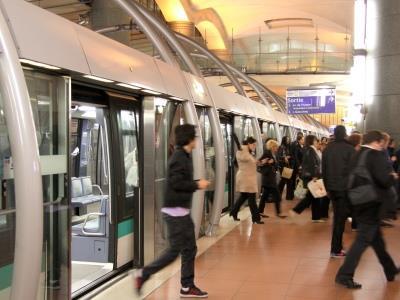
FRANCE: Paris metro operator RATP announced on July 29 that it had completed a live test of 4G LTE communications on the driverless Line 14.
The aim of the research project was to demonstrate the feasibility of using a single radio communication technology to deliver both safety-critical and non-safety-critical services on a metro network simultaneously. The test included a CBTC simulation based on pre-recorded real data, onboard and platform CCTV, operational voice communications with push-to-talk and group calls, onboard emergency passenger communications, the passenger information system, and onboard sensors that monitor performance to make maintenance recommendations.
The test marks the final stage of the €4·56m SYSTUF (Système télécoms pour le Transport Urbain du Futur) R&D project, part of a French government initiative to modernise municipal infrastructure through the introduction of new digital technology.
RATP defined the applications that must be supported by the network and determined what constraints are to be met to complete a convincing, secure and non-disruptive trial.
4G LTE technology was originally provided by Alcatel-Lucent, which subsequently merged with Nokia. In addition, the company provided project management and network optimisation. Alstom supplied communications-based train control, which includes a new LTE onboard mobile router.
Other partners in the project included Eurecom, the IFSTTAR consortium of research laboratories, Mitsubishi Electric and Telecom Bretagne. Simpulse Railenium, SystemX and B-COM are technological research institutes associated with the project.
The project’s initial phase ran from July 2012 to July 2015, during which time the technology was tested in Alcatel-Lucent’s Transportation Solution Labs. Following laboratory testing in 2012-15, live testing began on Line 14 in October 2015.
- A detailed feature article on the SYSTUF project appears in the September 2015 issue of Metro Report International, available to subscribers in our digital archive.

















